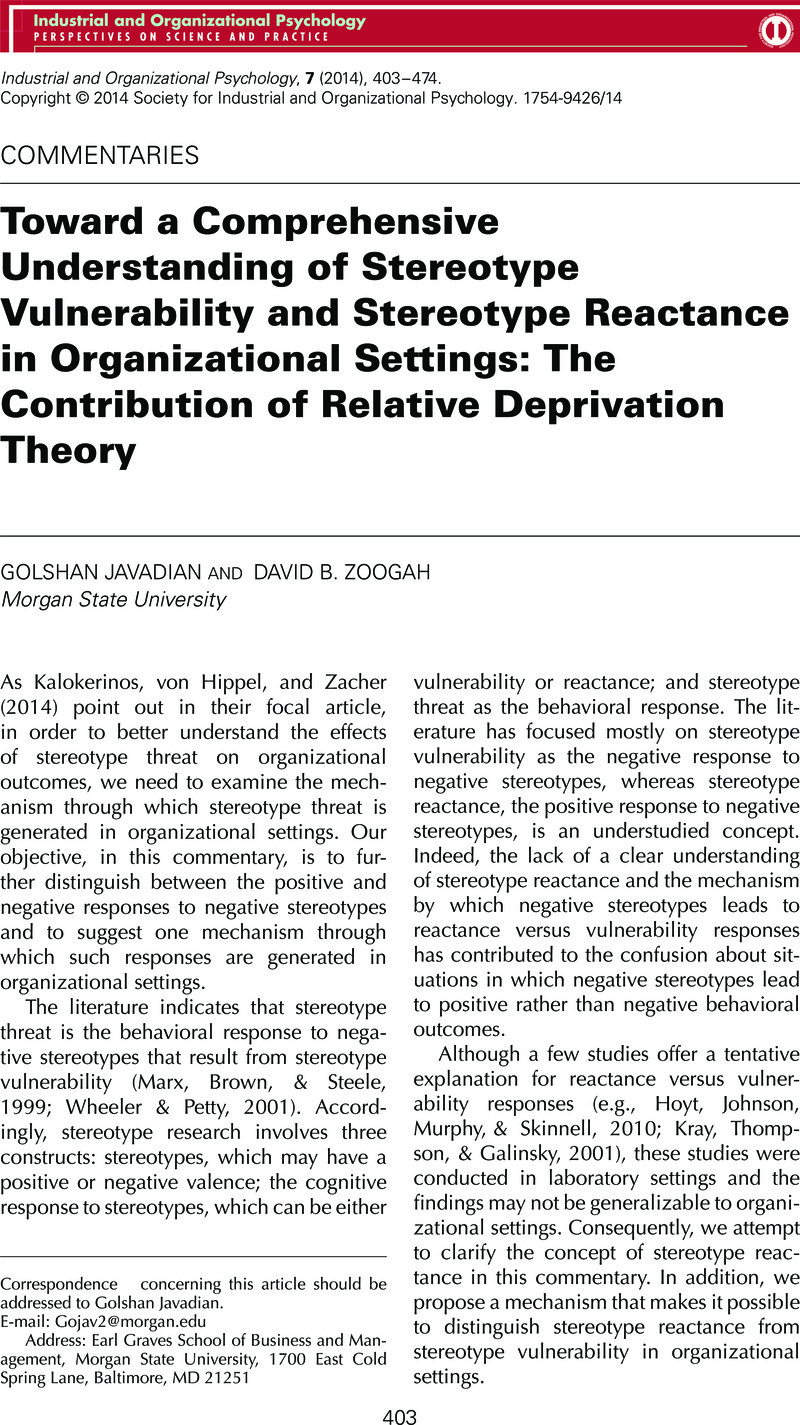Crossref Citations
This article has been cited by the following publications. This list is generated based on data provided by Crossref.
Tavitian-Elmadjian, Lucy
Bender, Michael
Van de Vijver, Fons J. R.
Chasiotis, Athanasios
and
Harb, Charles
2020.
Autobiographical recall of mastery experiences is a mechanism of self-affirming under social identity threat.
The Journal of Social Psychology,
Vol. 160,
Issue. 1,
p.
39.
Swab, R. Gabrielle
Javadian, Golshan
Gupta, Vishal K.
and
Pierce, Charles A.
2022.
Stereotype Threat Theory in Organizational Research: Constructive Analysis and Future Research Agenda.
Group & Organization Management,
Vol. 47,
Issue. 3,
p.
530.
Van Rossem, Annick Hortense Dominique
2022.
Nurses' generational stereotypes and self-stereotypes: a cognitive study.
Journal of Health Organization and Management,
Vol. 36,
Issue. 2,
p.
216.





